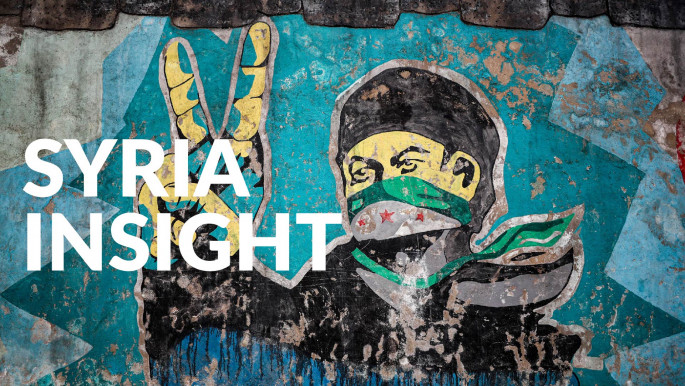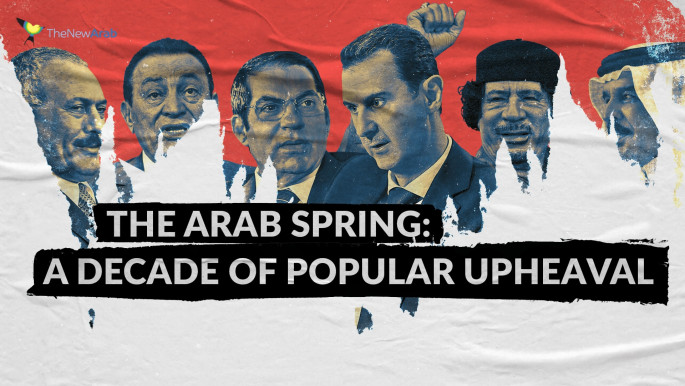In the shadows of Syria's revolution, a generation of activists is born
Waleed al-Nofal spent his last hours in Syria digging. Just half a day earlier, a soon-to-defect soldier gave his friend a list of names that were to be arrested that week. His name was on it.
He had already bid goodbye to his family and friends, haphazardly stuffing a few articles of clothing in a duffle bag with the promise that he would return in two weeks when everything had died down.
With two hours left until the smugglers came to take him to Jordan, al-Nofal rushed to an isolated spot in his city in the province of Daraa, bringing with him a laptop and a box of CDs.
They contained over two years of grainy footage of protests shot on cellphones and cheap camcorders. He hadn't been able to upload the latest videos yet, but he was out of time - so he buried the digital archive as if it was a cache of weapons, vowing to recover them as soon as he came back to Syria.
Al-Nofal, now 27 years old, has not yet returned to Syria since he left in February 2013 - and the videos remain buried to this day. He continued his revolutionary activism once he left Syria, acting as a go-between for activists in Daraa province and members of the international press. In 2016, he attended a journalism training course and was soon hired as a journalist, where he has continued to cover Syria.
Like so many others, the trajectory of Waleed's life was irreparably changed by the Syrian revolution. The uprising spurred a flurry of activism, enabling those living in what was once described as the "Kingdom of Silence," to finally be able to speak. Despite the overwhelming brutality and horror of the now-decade-long civil war, their voices have not fallen silent.
 |
A decade on, the wellspring of creativity and humanitarian action that the revolution inspired has not run dry |  |
A bottom-up movement
Though today Syria's opposition is fragmented into several different groups and the country is de-facto partitioned into three distinct political entities, with the Kurdish-led Autonomous Administration in the northeast, opposition and Turkish-held areas in the northwest and regime-held areas in the rest of the country - this has not always been the case.
When the revolution broke out in 2011, protestors quickly organised into local groups to plan peaceful protests and acts of civil disobedience. Known as Local Coordination Committees (LCCs), these groups linked the opposition movement together across the country, provided points of contact for foreign governments and media, and provided a coherence to the peaceful opposition movement.
 |
|
| Syria Insight: The New Arab's in-depth briefing on a tragic war |
The seeds of such a grand strategy did not come out of nowhere, though visible signs of a viable independent civil society were hard to detect in Syria prior to 2011.
In part, the roots of the revolutionary opposition movement came out of the leaders of the Damascus Spring and the signatories of the 2005 Damascus Declaration, who took nascent opposition figures like Razan Zaitouneh, under their wing, according to Lisa Roman, who worked with the US State Department building contacts among Syrian activists and later headed up the White House's Syria policy during Obama's second term.
While the intellectual roots and guidance of the opposition was taking shape under the leadership of leaders such as Zaitouneh, Syrians across the country were engaged in spontaneous, but concurrent acts of resistance to the regime. Al-Nofal describes how at just 16, he was struck by the brutality of the regime's crackdown against protesters and decided he needed to document what he was seeing by himself.
"For the first two months I would film by myself and just save the videos. Then I started to upload the videos to the internet so the world could see what was happening to us," al-Nofal told The New Arab. He kept his digital activism hidden, as in those days, "carrying a camera was more dangerous than carrying a weapon" in the eyes of the regime, he explained.
 |
Despite the overwhelming brutality and horror of the now-decade-long civil war, the voices of a new generation of activists have not fallen silent |  |
Soon he linked up with six other students from his high school and they formed what they precociously called a local coordination committee, separate from the LLC set up by opposition leaders in his city. They pooled their funds for internet cards to upload videos, created a rotation schedule for filming to ensure anonymity, and pledged to one another that should they be arrested, no one would give up the other.
From Al-Nofal's description alone, the protests they were engaged in were deadly serious and the lengths they went to send the footage of human rights violations outside of the country resembled a game of subterfuge that would not be out of place in a John Le Carre novel. However, when watching some of the videos filmed by al-Nofal and his fledging coordination committee, one is struck by just how young these revolutionaries were.
In one of the videos, students chant revolutionary slogans in their schoolyard. Though the chants are solemn and the students resolute, the revolutionary banner held in front of the camera is written on a piece of perforated paper ripped out of a notebook, and children mill about, jubilant. Some look to be no older than ten.
Still, al-Nofal did not exaggerate when he said the consequences of their protests could be deadly, even for schoolchildren. Soldiers soon stormed his school in a raid caught on video. "You can see me throwing rocks at the soldiers as they entered, until I realised how many there were and I began to run," al-Nofal said, laughing.
 |
|
| Special Coverage: A decade after the Arab Spring |
A follow-up video shows the students laying in a row in the dirt, heads down. "Soldiers were shooting at the ground - I thought they were executing us one by one and I was next. Then they beat us with strips of tire and chains. I had to stay in bed for the next twenty days," al-Nofal said. Other forms of activism were quieter, with less political intent behind them, but still revolutionary nonetheless.
Musaab al-Abdullah (a pseudonym), a 40-year-old Syrian from Palmyra who has since been displaced to northwestern Syria, worked as a tourist guide and a waiter in his brother's restaurant before the revolution. Once military skirmishes began, al-Abdullah began helping displaced people find shelter, and gave them food. He coordinated assistance purely through his friends, afraid to publicly seek assistance lest he attracted the attention of regime security forces for "helping supporters of the revolution," he told The New Arab.
After his displacement to the opposition-held area, al-Abdullah intensified his humanitarian work, freed by the constraints of regime surveillance. He began to write about urgent medical cases in his community on social media, using the English he had learned as a tour guide to communicate with other activists abroad and those sympathetic to the Syrian cause to get financial and material support for these cases.
Now he is known as a helper in his community, and he is often approached by families who are in need to secure them aid. He connects these families with aid organisations active in the area or generates enough attention on social media to raise the profile of their case. In one such instance, an infant was suffering from lung inflammation and needed medical treatment which outstripped the capacity of local clinics. After he helped rally activists around the infant's cause, the child was able to cross into Turkey to receive medical treatment. In his latest humanitarian act, he was able to secure a wheelchair for a local disabled child.
 |
To document their experiences and the violations committed against them, Syrians have banded together to form a thriving civil society |  |
Roman said that it was often local, unnoticed initiatives that made the most difference on the ground, not solutions imposed from above by great powers or political associations. She recalled one instance in which a local opposition organisation in Homs was able bridge gaps with regime supporters in the area and successfully negotiate prisoner exchanges with regime forces.
"When the US asked them what they needed, they told us: 'Can you get us bottles of whiskey?'" Roman said. Incredulous, she asked them what they could possibly need whiskey for, to which they told her that bartering whiskey was the way they were able to get prisoners out of jail. In another instance, the opposition organisation in Homs floated the idea of an arms buyback program to reduce violence in the area.
"On a local level, people were negotiating and talking with each other all the time. Anytime there was a solution, it's because people on the ground saw a need and solved it themselves," she said.
 |
|
| The erasure of Yarmouk: How the Assad regime is dismantling Syria's hub of Palestinian life |
Ten years later: Now what?
The scale of destruction in Syria after a decade of war is hard to fathom. When describing it, the challenge is not searching for the numbers to describe the brutality of the war; they are available.
Instead, the challenge is choosing which particular aspect of the country's destruction to focus on. Should commemorations of the war focus on the over 600,000 people killed? The millions displaced? The man-made famine in the country or the razing of much of the country's buildings and historical monuments to the ground?
On the other hand, a decade on, the wellspring of creativity and humanitarian action that the revolution inspired has not run dry. To document their experiences and the violations committed against them, Syrians have banded together to form a thriving civil society. Local media initiatives that do not bow to censorship, Syrian-led humanitarian organisations that save thousands from horrific conditions, and quests for justice which have landed war criminals in front of judges are all continuing, evolving products of the Syrian revolution.
For his part, despite the losses he has endured, Waleed al-Nofal is resolute in continuing his activism, in the hope of returning home one day and unearthing the memories he buried so long ago.





 Follow the Middle East's top stories in English at The New Arab on Google News
Follow the Middle East's top stories in English at The New Arab on Google News


